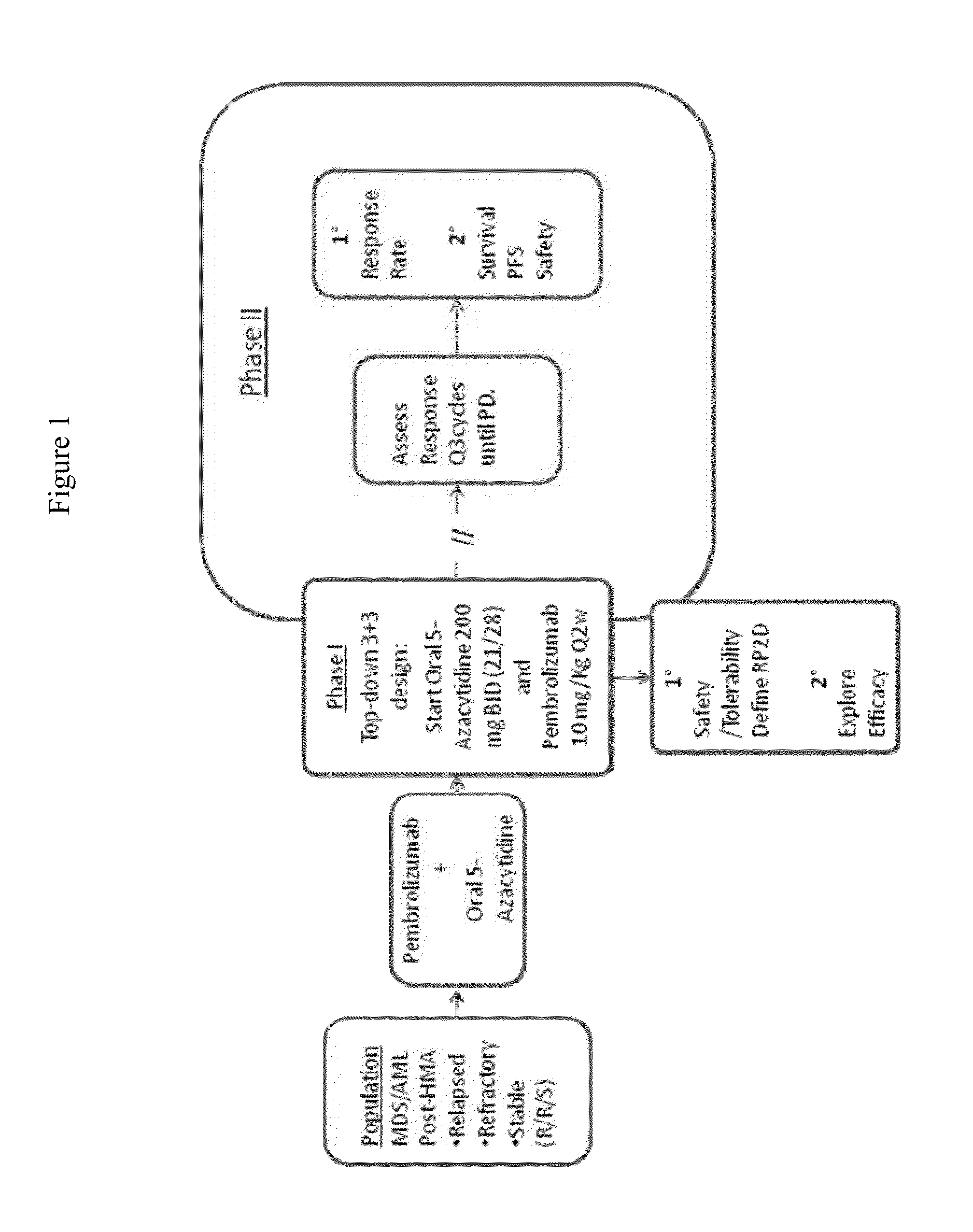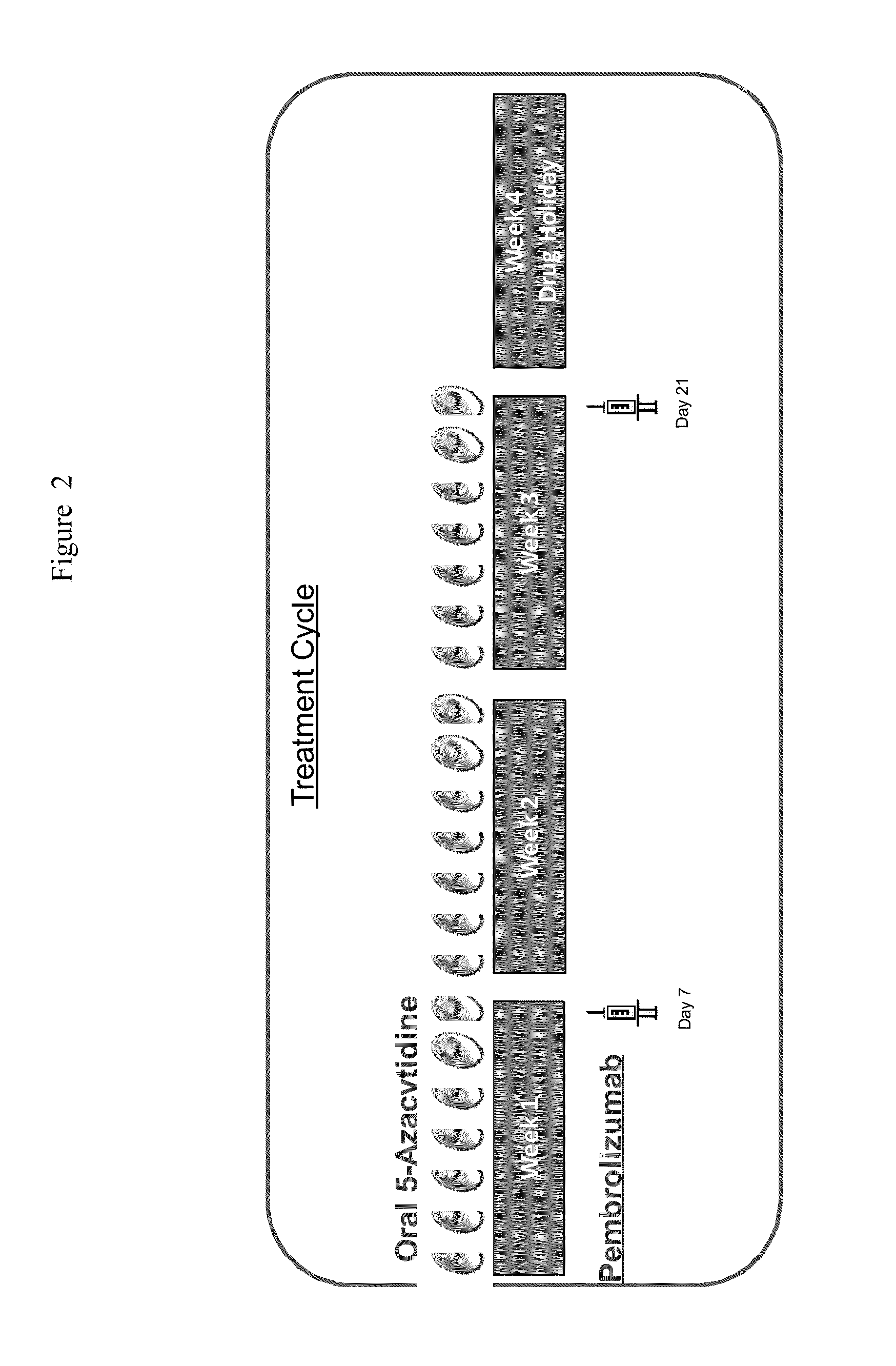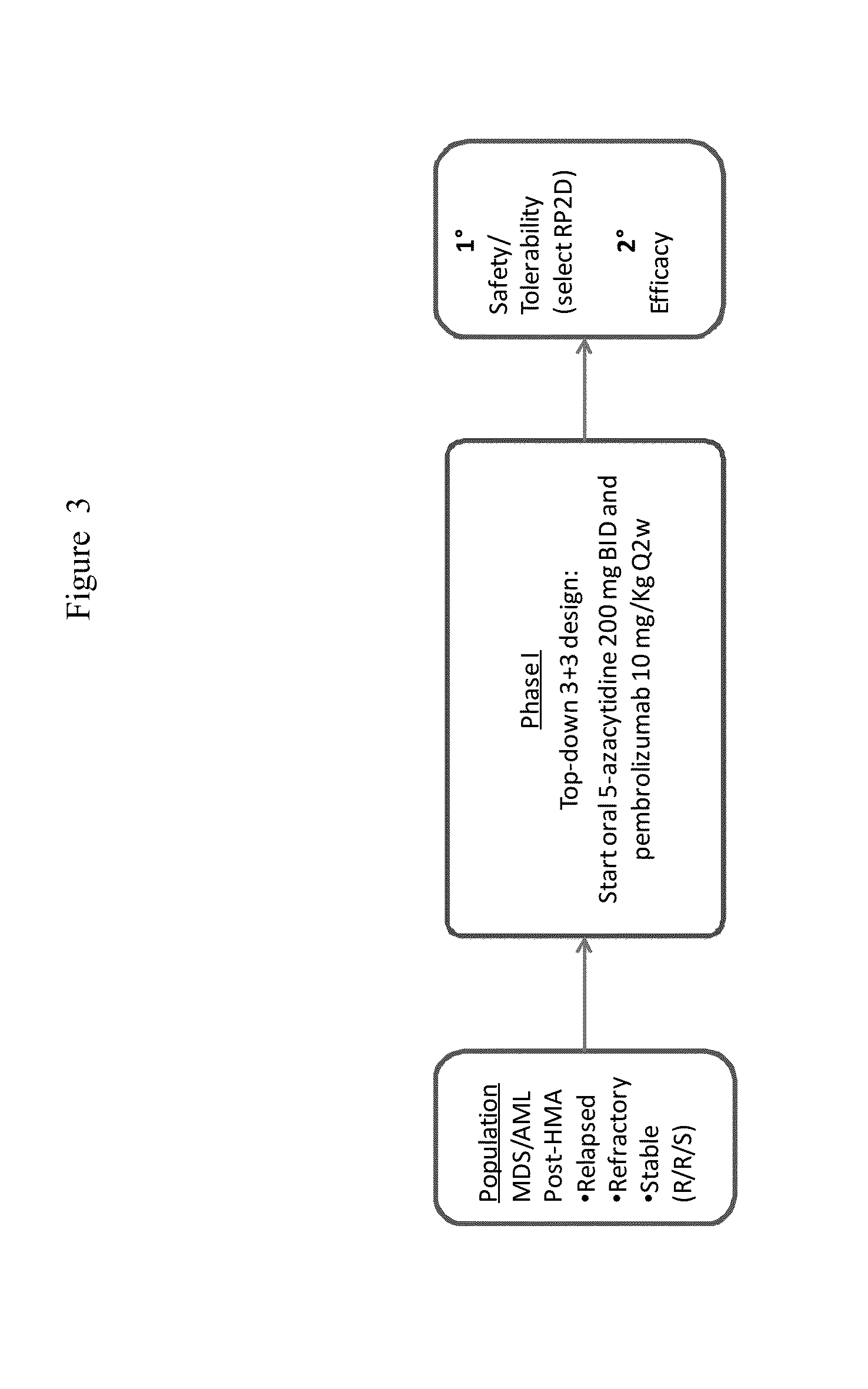Methods for treating a disease or disorder using oral formulations of cytidine analogs in combination with an Anti-pd1 or Anti-pdl1 monoclonal antibody
a technology of cytidine analogs and monoclonal antibodies, which is applied in the direction of antibody medical ingredients, drug compositions, extracellular fluid disorders, etc., can solve the problems of variable risk of progression to acute leukemia, ineffective blood cell production, and inability to cure cancer. to achieve the effect of improving the survival of the subj
- Summary
- Abstract
- Description
- Claims
- Application Information
AI Technical Summary
Benefits of technology
Problems solved by technology
Method used
Image
Examples
example 1
A. Example 1
[0303]A Phase 2 multicenter, randomized, double blind, placebo controlled study of immune checkpoint inhibition with pembrolizumab with or without epigenetic priming with oral 5-azacytidine in women with relapsed epithelial ovarian cancer is performed.
[0304]The current study will test the hypothesis that oral 5-azacytidine, an orally bioavailable formulation of AZA, can induce AIM expression in tumors of EOC patients and thereby enhance the response of these tumors to PD-1 inhibition with the monoclonal antibody pembrolizumab.
[0305]The objective of this study is to evaluate the activity and safety of pembrolizumab, alone and in combination with oral 5-azacytidine in patients with epithelial ovarian cancer.
[0306]Objectives
[0307]The primary objectives are to estimate progression-free survival (PFS) in both treatment arms and to estimate the PFS hazard ratio for the combination arm relative to the pembrolizumab monotherapy arm. The secondary objectives are to estimate the o...
example 2
B. Example 2
[0351]A Phase 1 / 2 international, multicenter, single-arm study of the safety and tolerability of oral 5-azacitidine in combination with pembrolizumab for the treatment of myelodysplastic syndromes (MDS) or acute myeloid leukemia (AML), not responding to treatment with injectable hypomethylating agents (HMAs), is performed. See FIG. 1 for study flow diagram.
[0352]Objectives
[0353]The primary objectives in Phase I are to evaluate the safety and tolerability of the regimen and to define the recommended Phase II dose (RP2D) for further evaluation. The primary objectives in Phase II are to evaluate efficacy measures associated with this regimen when used to treat patients with MDS or AML that did not respond to an injectable HMA. The secondary objectives in Phase I are to evaluate efficacy signals observed in these initial subjects. The secondary objectives in phase II are to evaluate safety and tolerability of the regimen when given in sequential treatment cycles. The explora...
example 3
C. Example 3
[0390]A Phase 2 multicenter, randomized, double blind, placebo controlled study of oral 5-azacytidine in combination with pembrolizumab for the treatment of non-small cell lung cancer is performed.
[0391]Objectives
[0392]The primary objectives are to estimate progression-free survival (PFS) in both treatment arms and to estimate the PFS hazard ratio for the combination arm relative to the pembrolizumab monotherapy arm. The secondary objectives are to estimate the overall survival (OS), objective response rate (ORR), clinical benefit rate (CBR), and duration of clinical benefit in both treatment arms and evaluate safety.
[0393]Endpoints
[0394]The primary endpoint is the determination of PFS. The secondary endpoints are the determination of OS, ORR, CBR, duration of clinical benefit, and safety.
[0395]Study Design
[0396]The study will be a randomized, placebo-controlled, parallel group, multicenter double-blind phase 2 study. Subjects will be randomly assigned in a 1:1 ratio to ...
PUM
| Property | Measurement | Unit |
|---|---|---|
| mass | aaaaa | aaaaa |
| mass | aaaaa | aaaaa |
| mass | aaaaa | aaaaa |
Abstract
Description
Claims
Application Information
 Login to View More
Login to View More - R&D
- Intellectual Property
- Life Sciences
- Materials
- Tech Scout
- Unparalleled Data Quality
- Higher Quality Content
- 60% Fewer Hallucinations
Browse by: Latest US Patents, China's latest patents, Technical Efficacy Thesaurus, Application Domain, Technology Topic, Popular Technical Reports.
© 2025 PatSnap. All rights reserved.Legal|Privacy policy|Modern Slavery Act Transparency Statement|Sitemap|About US| Contact US: help@patsnap.com



